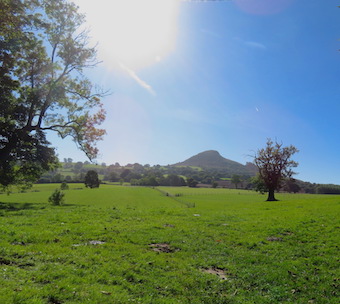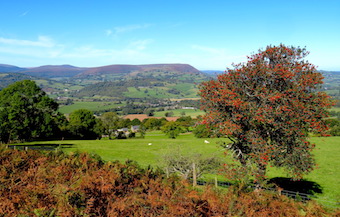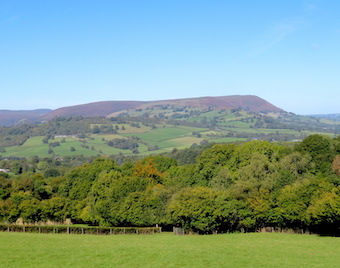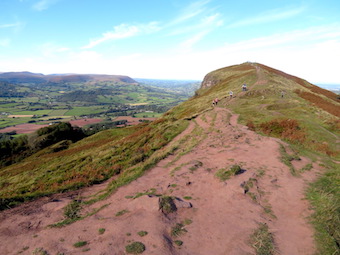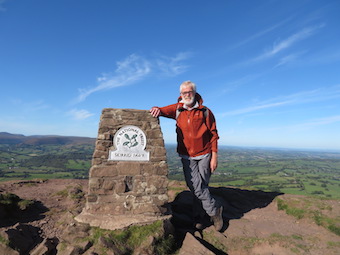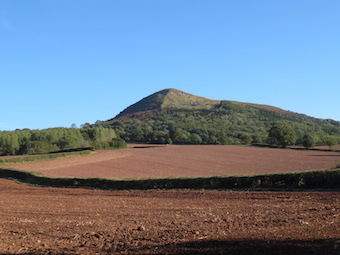First published in: The Times Click here to view a map for this walk in a new window










Unseasonably warm, unseasonably sunny – so said everyone in the car park as they prepared for their Sunday constitutionals across Haddon Hill, a fine double hump of sandstone standing proud on the south-eastern edge of Exmoor.
Once out on the open moor there were dark shaggy Exmoor ponies cropping the grass among the bracken, stonechats with black caps and white clerical collars calling wheesht-chip-chip! from the tips of gorse bushes, and a wonderful view north down to Wimbleball Lake lying as smooth as iced glass.
On top of the trig pillar at the summit of Haddon Hill sat a tiny boy clutching a woollen rabbit. His father teetered a-tiptoe behind him on the pillar, expounding on the remarkable view from the Exmoor outliers in the north to the craggy profile of distant Dartmoor away to the south.
I followed a rubbly track steeply down through a bronze sea of bracken towards the lake. Autumn seemed on the cusp of handing over to winter with the silver birch already bare, leaves of toffee and lemon hue lining the verges of the paths, and a robin giving out that sharp silvery burst of song so characteristic of woodland at the dead end of the year.
The dam wall and control house of Wimbleball Lake are an essay in stark brutalist concrete, in striking contrast to the naturalistic curves of water and woodland. A boy came riding his bike across the dam, wheelie-ing all the way and grinning like a prancing cowboy at a rodeo.
Down in the depths of Hartford Bottom, the densely wooded combe beyond, I trudged the muddy track from the few cottages of Hartford past the bubbling tanks of a fishery and on beside the meanders of the fast-rushing River Haddeo. A beautiful green cleft in the hills, mossy and full of the noise of lively water.
At Bury a car moved slowly between the trim stone cottages before inching across the village ford. I crossed the river alongside by way of a handsome old packhorse bridge with humpy back and pointed arches. Then it was a long winding climb from the sunny valley up to the open moor again under the overarching beeches of shaly, slippery Haddon Lane, half steep holloway, half trickling stream.
How hard is it? 6½ miles; moderate; bridleway road from reservoir dam down to Hartford is slippery; muddy between Hartford and Bury, and in Haddon Lane.
Start: Haddon Hill car park, near Dulverton TA4 2DS (OS ref SS 970284)
Getting there: Car park is off B3190 (Watchet-Bampton) between Ralegh’s Cross and Morebath.
Walk (OS Explorer OL9): Through gate at NW (top left) corner of car park. Bear right away from trees; follow main stony track gradually uphill to pass trig pillar (962286). Continue along track; in 300m fork right on grass path; in 150m sharp right (959286) on track heading for lake. In ½ mile fork left (967288) downhill past reservoir to road (969288). Left downhill to pass dam (965292). Continue downhill (‘Hartford ½’); at road, left (960294) through Hartford and on (‘Bury 2’). At Bury, left across bridge (945274). In 150m, just past Chilcotts house, left up Haddon Lane (‘Haddon Hill 1¼’). At Haddon Farm (955281) dogleg left/right onto track (‘Haddon Hill’). In 400m fork right through trees (958281, ‘Bridleway Upton’). In 100m into field; ahead through gate; half left up field slope to gate at far top left (962282). Forestry track to car park.
Lunch: Picnic
Accommodation: Ralegh’s Cross Inn, Brendon Hill TA23 0LN (01984-640343, raleghs-cross.co.uk)
Info: visit-exmoor.co.uk






































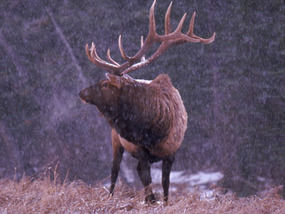 An answering roar, deep and melancholy, echoes from the hillside opposite. “Ah, there they are, dear old boys, giving each other the early warning,” smiles Richard Eales, Exmoor National Park Ranger of several years’ experience and a born deer fanatic.
An answering roar, deep and melancholy, echoes from the hillside opposite. “Ah, there they are, dear old boys, giving each other the early warning,” smiles Richard Eales, Exmoor National Park Ranger of several years’ experience and a born deer fanatic. 

















